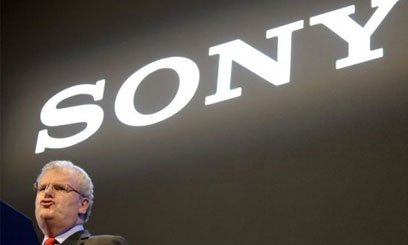Sony’s projected annual net loss of 90 billion yen ($1.15 billion) reversed a forecast in July that called for a 60 billion yen net profit, after the company slumped to a first-half net loss.
The Tokyo-based maker of PlayStation consoles and Bravia television sets has been struggling under the weight of a strong yen, while wrestling with the aftermath of the March earthquake and now Thailand’s floods which have dented its production there.
The company’s loss-making television business remains a burden amid fierce competition from rivals such as South Korea’s Samsung Electronics and falling prices in the liquid crystal display market.
A slowdown in demand in the United States, Japan and Europe has further squeezed profit margins and put the television industry under renewed pressure.
Sony said that six month sales in its consumer products and services segment that includes TVs, personal computers and its PlayStation gaming system were hit by lower demand.
It posted a first-half net loss of 42.5 billion yen compared to net income of 56.9 billion yen in the same period of the previous fiscal year. Operating profit plunged 81 percent to 25.9 billion yen.
In the second quarter alone, Sony slumped to a net loss of 27 billion yen compared to a 31.1 billion yen profit in the same period a year earlier.
For the full year, Sony forecast sales of 6.5 trillion yen, down nearly 10 percent from its July forecast, while revising operating profit 90 percent lower to 20 billion yen.
A massive data breach forced Sony to shut down its PlayStation Network and Qriocity services in April with more than 100 million customer accounts compromised, in a crisis that quickly followed the March disaster.
The firm was forced to shutter plants in Japan after the quake and tsunami battered supply chains, damaged facilities and dampened consumer demand.
On Wednesday, it said the flooding in Thailand presented similar problems, with its business operations hit by “direct damage from inundation of Sony’s manufacturing facilities and difficulty in procuring parts and components resulting from the Floods”.
Production at several manufacturing facilities has been stopped, while it has been forced to postpone certain product launches.
While Japanese firms have been seen to stage a quicker-than-expected recovery from the twin disasters, the rise of the yen has hurt exporters, eroding repatriated overseas earnings.
The unit has risen against the euro amid global economic worries, and on Monday hit its highest level since World War II against the dollar, prompting Japanese authorities to conduct their fourth intervention in just over a year.
Sony now faces its fourth consecutive year in the red after suffering a net loss of $3.2 billion in the year ended March, despite having forecast a return to the black this year.
As it looks to boost profitability, Sony said last week it would buy out its Swedish partner Ericsson’s 50 percent stake in their mobile phone joint venture, giving it full control over its increasingly vital handset business.
By taking full control, Sony can integrate its smartphone operation with its tablet, hand-held game console and personal computer businesses to save on costs and better synchronise development of mobile devices.
The move comes as Sony’s competitors such as Apple and Samsung forge ahead with closely coupled strategies for smartphones and tablet computers.
The March earthquake hit after the electronics and entertainment giant underwent a major restructuring under chairman Howard Stringer — slashing thousands of jobs, selling facilities and turning to suppliers for parts — after seeing losses pile up as the financial crisis hit demand.




































